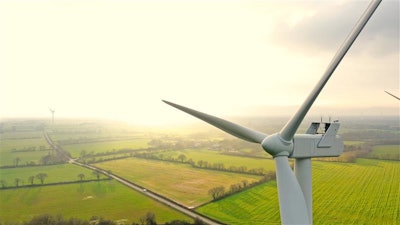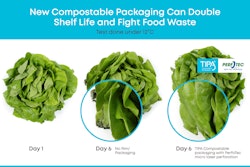
2020 was a tumultuous trip around the sun on a global scale. With the pandemic came interrupted day-to-day operations and a fundamental shift in how organizations conduct business. Many companies found a spotlight shining on weak spots they had previously neglected or given little thought, and the supply chain was no exception. As we head into a new year in the wake of massive disruptions, here are three major trends projected to ensure continuity and resiliency throughout 2021 and beyond.
Scope 3 (value chain) emissions reduction will take priority
In the past, attention has been heavily centered around reducing Scope 1 and 2 emissions, drastically neglecting a critical piece of the puzzle in creating tangible impact. With major environmental crises, such as the destruction of biodiversity, looming, companies must come to the realization that driving lasting change is simply not possible until emissions are reduced across the entire value chain, and then take action to effect that change. Scope 3 provides the visibility into supply chain emissions and risk hot spots needed to effectively make this improvement for the future.
In the year ahead, expect this realization to transform into a major trend accelerated further by ongoing corporate and social initiatives. Major businesses committing to science-based targets (SBTi) and setting targets in line with the Paris Agreement will factor heavily into this prioritization of Scope 3 emissions reduction. Already we have seen new initiatives arise out of major political events across the globe. Take for example President Joe Biden’s winning the 2020 U.S. election. Almost immediately, we have seen his newly proposed climate action put the nation in striking distance of hitting targets set out in the Paris Agreement. And, that is just the tip of the iceberg.
Across the pond, the solidification of the EU Green Deal has pushed Europe to commit to achieving carbon neutrality by 2050. This commitment coinciding with tighter regulations such as the impending rise in European carbon taxes and increased constraints on fossil fuels makes the call for action to concretely impact emission reductions stronger. Broad, public claims with immeasurable goals and unsubstantial results will no longer be tolerated as they once were. The sustainability tone has been set, now it’s up to the world to follow through.
Blockchain will lose its luster in the supply chain
Blockchain was once viewed as a magical solution – the end all be all for solving supply chain visibility issues. While a nice sentiment, this wishful thinking will come to an end as the market realizes that a simple wave of the blockchain wand will not grant their visibility wishes.
This sought-after “instant visibility” cannot be provided through the use of blockchain platforms. In the wake of this conclusion, additional resources will be invested into supplier engagement, collaborative improvement and incentive-based management. The often-unachievable goal of gaining visibility instantaneously will shift toward the future. Building long-term, concentric layers of performance improvement will take its place as suppliers implement sustainable approaches, actively pushing the requirements and learnings upstream.
The economic fallout of COVID-19 will put social practices to the test
When the initial outbreak of the Coronavirus disease (COVID-19) hit, most organizations weren’t sure what to do or which direction to move in. But, rightfully so, one thing was clear – worker health and safety was a top priority. However, as we’ve gone on now teetering on the edge of the 10th month in pandemonium, these workers, who had once been given the undivided attention they deserved, found themselves unsupported and overworked by those very employers. Egregious human rights abuse accusations ferociously impacted many organizations as manufacturers struggled to keep up with demand. But, when workers are creating protective equipment severely needed to save lives, where does the ethical line fall? The lack of action and support initially promised by employers quickly put supply chains at high risk for human rights issues and many unforeseen and unwanted consequences.
In the midst of all of this, the cry for action to be taken on substantial diversity initiatives has never been louder, largely triggered by societal uproar following major events that occurred in 2020. As we see organizations taking a stand and making good on their promises, consumers, investors and stakeholders will focus less on surface-level diversity issues and require companies to provide complete transparency into workforce and supply chain practices and behaviors. Minority ownership labels will become less important in sourcing and investment decisions as emphasis will be placed on overall workforce diversity in tangent with how employees are treated.
So, what happens next?
Next to come, the economic hangover of it all. Many industries are looking ahead at a long road of financial recovery. While it may be tempting, cutting corners isn’t the solution in any sector. Now is the time for all companies to be extremely attentive to their suppliers while increasing their focus on human rights and social issues.
As we begin to emerge from what will go down as a monumental year in history for a myriad of reasons, organizations must use the insights gained from the disruption that was 2020 to build for a better future. Sustainability is undoubtedly here to stay as the attitude shifts from “just-in-time” to “just-in-case” and investing the valuable resources it deserves will bring about the benefits and results your supply chain needs. 2021 is a chance to build resilience, visibility and put yourself on firm footing for what’s to come.
















